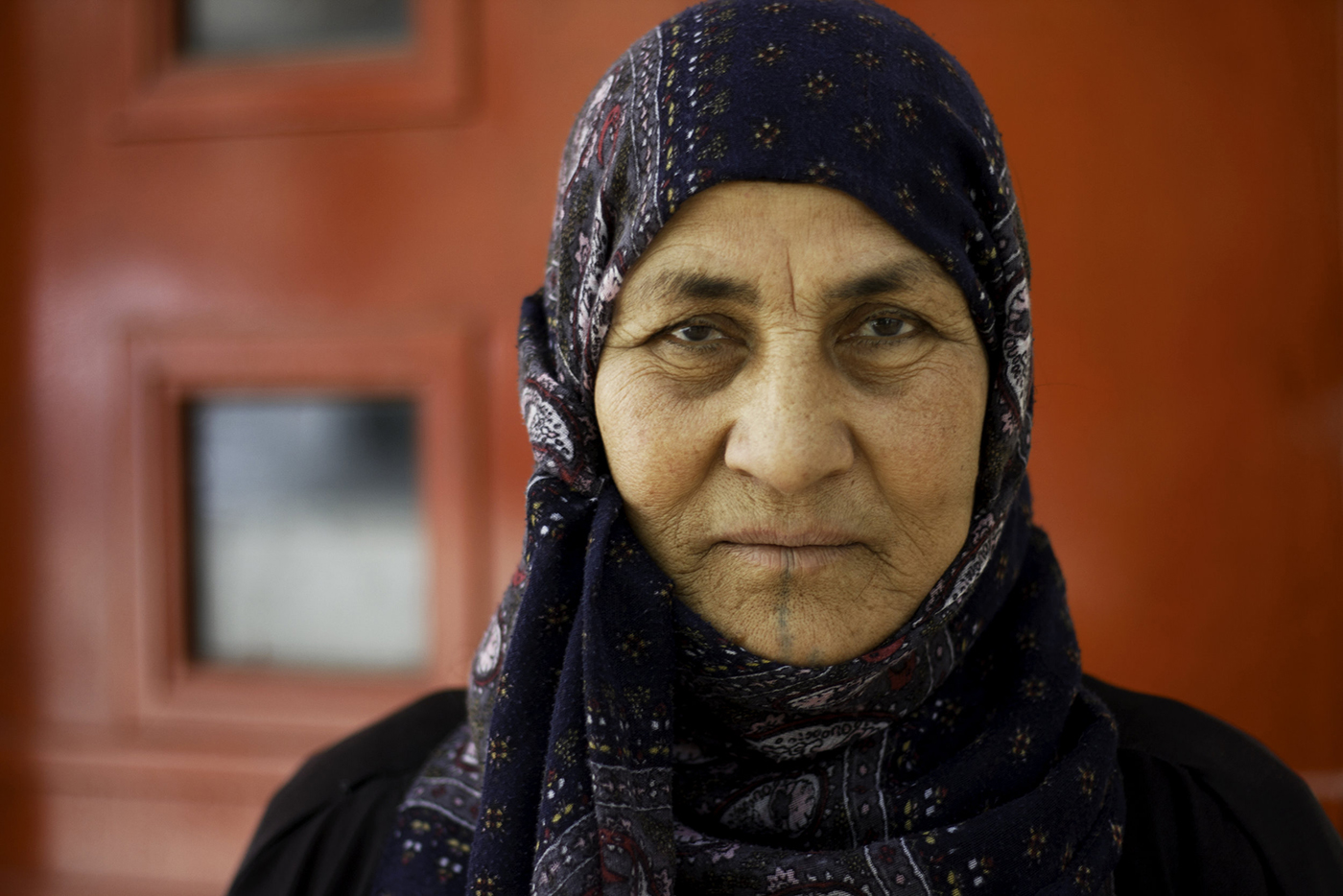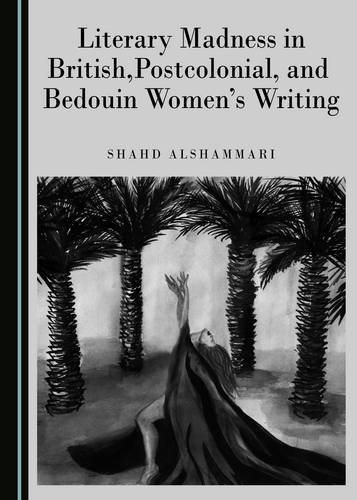
The following is excerpted from Literary Madness In British, Postcolonial, and Bedouin Women’s Writing, by Shahd Alshammari and is presented here by special arrangement with the author.
Shahd Alshammari
Women, having always been identified with “emotion” and the body, rather than reason, have a certain power to threaten and disrupt universal ideologies that are constantly working to re-enforce women’s subjugation. Literary Madness In British, Postcolonial, and Bedouin Women’s Writing aims to investigate literary representations of madwomen figures who protest against their respective societies and environments. When we think of the figure of the “madwoman” we immediately think of the madwoman in the attic, the crazy, grotesque figure that haunts Charlotte Bronte’s Jane Eyre. In a sense, she is the prototype of the “madwoman” figure.
The theme of madness and madwomen protagonists is a textual strategy, one that makes use of fragmentation and unsettles the readers. The texts do not provide a sense of completeness or closure; they are fictions of fragmentation, of gaps and inconsistencies, multilayered discourses of otherness, and a sense of disintegration. There are multiple tensions that must be reconciled within the madwomen’s volatile environments and their inner consciousness. The protagonists are not “normal” in any sense, they are different and deviant, and their endings are culminated in madness and/or death. This textual strategy of employing madness is used by women writers to speak out against both patriarchy and Empire, and it is the madwomen protagonists who are able to embody agency.

The madwomen figures are embodied agents, whether through their experience of madness or physical disability. In fictional texts, madness and disability cannot be ignored; they are potent forces that shed light on discourses of race, gender, and otherness. I am concerned with the experiences of madness, invalidism and disability in literary narratives because of their potential to disrupt any discourse of normalization. Lennard Davis’s work on disability is significant in the field of Disability Studies. In Bending Over Backwards: Disability, Dismodernism and Other Difficult Positions, he argues that disability is a discursive category, and examines the relationship between disability and normality in the light of postmodern theory. He claims that disability is a “new category…seen as continuous, running the gamut from physical impairments to deformity to monstrosity to madness.” Ideas of disability and who falls into the category of the “disabled” remain unclear and fluid; disability encompasses an extraordinary range of physical, psychiatric, and cognitive attributes. As such, my madwomen figures in literary narratives are part of a larger scope of deviant figures that are excluded from the discourse of normalcy.
The fictional madwoman figure is either mentally deranged, has a bout of madness which then manifests itself physically, or is both mad and physically disabled.
It is crucial to historicize the emergence of madness and its repercussions. Michel Foucault’s Madness and Civilization: A History of Insanity in the Age of Reason is considered one of the most influential works on mental illness, a great contribution to the sciences and the arts. Foucault argues that madness is not necessarily a biological or natural state, but is socially constructed and sustained by oppressive societies which aim to control, regulate, and monitor human behavior. Foucault has studied the institutionalization of madness and humankind’s fear of “the bestiality of the madman…The mentally ill person was now a subhuman and beastly scapegoat; hence the need to protect others.” A major flaw of Foucault’s work is its preoccupation with the West’s views on madness, yet it remains indispensable to the study of madness.
Among the authors and novels examined in Literary Madness are Emily Brontë’s Wuthering Heights (1847), Charlotte Brontë’s Jane Eyre (1847), Jean Rhys’s Wide Sargasso Sea (1966), Arundhati Roy’s The God of Small Things (1997), Fadia Faqir’s Pillars of Salt (1996), and Miral al-Tahawy’s The Tent (1996).
For Foucault, madness and sanity are mutually constructed. He speaks of the “man of madness and the man of reason, moving apart, are not yet disjunct…Here madness and non-madness, reason and non-reason are inextricably involved: inseparable at the moment when they do not yet exist.” Sanity and insanity are dualistic oppositions, but for Foucault, they are coexisting. The question of madness in Foucault’s text deals with Western notions of reason and unreason, what constitutes both, and how society had perceived those who failed to behave within the reason framework. Western culture went through a series of reactions to madness, or what was deemed as “unreason.” At the end of the Middle Ages, Foucault argued, “madness and the madman [became] major figures, in their ambiguity: menace and mockery, the dizzying unreason of the world, and the feeble ridicule of men.” The madman, so to speak, was able to enunciate reality and reason through his utterances of unreason. He was able to provide, or speak, “love to lovers, the truth of life to the young, the middling reality of things to the proud, the insolent, and to liars.”
Perhaps even more so is the madwoman, who in her madness is able to threaten the patriarchal order. In the selections of texts I have chosen, the madwoman figure is a figure of protest that almost always speaks out against the hegemonic order, and uncannily is the voice of wisdom. Her voice is the voice of true reason, the voice that the author employs to critique society and women’s subjugation.
The many themes I analyze in Literary Madness include the patriarchal and colonial relations within the domestic space and the public space, culture-specific factors that accentuate the “madwoman’s” condition, the Bildungsroman, the mother-daughter relationship in postcolonial texts, abjection and trauma, loss, self- annihilation and alienation, and madness as a breakdown as well as a breakthrough. Madwomen figures speak, but are not heard. Ironically, their words are usually words of wisdom; they have an uncanny ability to diagnose the failures of their societies and criticize the oppressive forces of Empire and patriarchy. There is a paradoxical power of madness that threatens to unravel and vocally criticize previously sanctioned ideologies of oppression. As such, the madwomen are silenced, shunned, and rejected.
As a Literary Disability Studies scholar, I trace notions of madness in literary texts, media productions, and consider how madness is treated across various cultures. Most recently, my book Head Above Water: Reflections on Illness questions the stigmatization of ill and/or disabled bodies, with a special focus on my lived experience of disability and navigating society’s ableism. Ableism as a word is almost unheard of in Arab societies and while gender and women’s studies are gaining increased scholarly (and public attention) disability studies and narratives (fictional or nonfiction) remain marginalized. In Head Above Water, madness is tied to loss of agency and voice. “Madwomen” figures are not allowed to speak and thus their body/minds break down, thus reflecting the intertwinement of the mental and the physical in the context of race and gender. Able-mindedness and able-bodiedness are both explored through the upholding of patriarchal oppressions and silencing of women.



